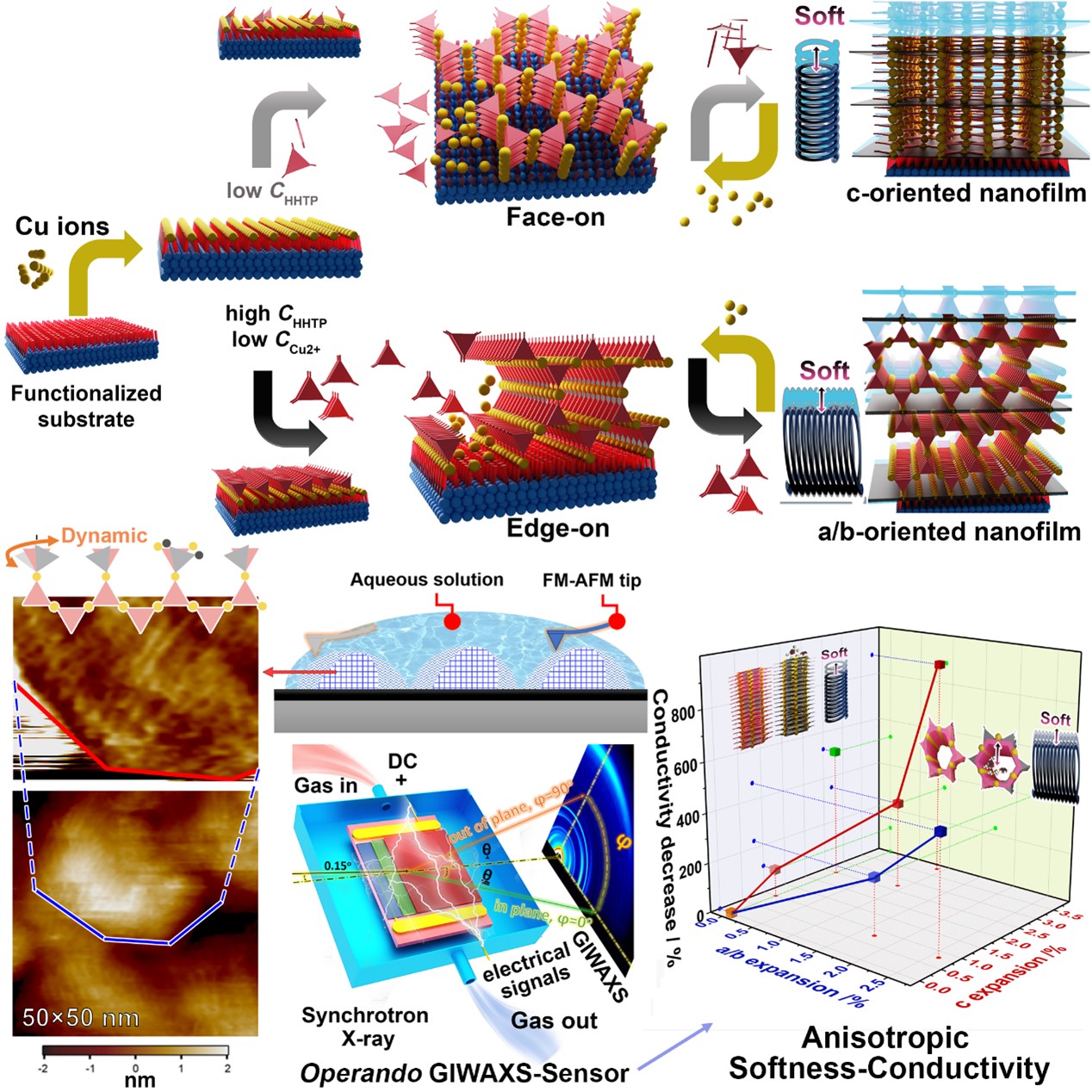Researchers from the Institute of Process Engineering (IPE) of the Chinese Academy of Sciences and Kyoto University have proposed a strategy to grow 'face-on' and 'edge-on' conductive metal-organic frameworks (cMOF) nanofilms on substrates by controlling the "stand-up" behaviors of ligands on various surfaces to overcome the difficulty in the orientation control of such film.
They established operando characterization methodology using atomic force microscopy and X-ray to demonstrate the softness of the crystalline nanofilms and reveal their unique conductive functions.
The study was published at PNAS on Sep. 25th (DOI: 10.1073/pnas.2305125120).
Electrically cMOFs have gradually emerged by unlocking their potential to conduct charges in porous crystals. cMOFs applied in electrical devices normally hybridize with other materials, especially substrates. Therefore, precisely controlling the interface between cMOF and a substrate is crucial.
However, the unexplored interface chemistry of cMOFs makes the controlled synthesis and advanced characterization of high-quality thin films particularly challenging. Specifically, in contrast to the anticipated "edge-on" alignment of the 2D planes stemming from the hydrophilic -OH edge and the hydrophobic triphenylene core, the orientation observed experimentally is, in fact, the "face-on" configuration of the 2D planes on the substrates.
"The challenge lies in inducing the necessary high surface pressure to achieve a 'standing up' configuration of the core," said Prof. YAO Mingshui from IPE, first author of the study.
It is commonly observed that, in Langmuir-Blodgett (LB) technique, ligands with a hydrophobic core and a hydrophilic edge can adopt an upright orientation on hydrophilic surfaces when subjected to high surface pressure.
"Inspired by the 'standing up' behaviors, we employ ultra-high concentration, together with vigorous evaporation during spraying, to create a unique local high surface pressure that can induce the 'standing up' of HHTP (HHTP = 2,3,6,7,10,11-hexahydrotriphenylene) ligands. Accordingly, the 'face-on' and 'edge-on' thin films can be fabricated," said Prof. Kenichi Otake from Kyoto University, corresponding author of the study.
Various reliable analysis was conducted to verify the crystallinity and orientation of films with an ultra-thin thickness ranging from a few nanometers to tens of nanometers.
"The operando GIWAXS imaging and electrical monitoring revealed the anisotropic framework softness associated with electrical conductivity on the cMOF nanofilm. It answers the question whether the generally considered rigid Cu-HHTP can be soft," said Prof. Susumu Kitagawa from Kyoto University, corresponding author of the study. In addition to redox interactions, the structural softness has been confirmed to modulate the electrical conductivity in an anisotropic way.

Fig. Schematic showing the preparation of the conductive MOF thin films with reversal orientations, the lattice image obtained from FM-AFM, and the anisotropic softness-conductivity revealed by the operando GIWAXS-Sensor (Image by YAO Mingshui)
Media Contact:
LI Xiangyu
Public Information Officer
Institute of Process Engineering, Chinese Academy of Sciences, Beijing 100190, P. R. China.
E-mail:xiangyuli@ipe.ac.cn
Tel: 86-10-82544826
 Search
Search




 京公网安备110402500047号
京公网安备110402500047号